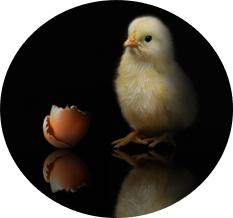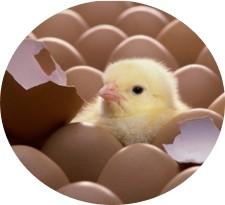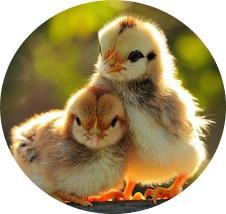In this section I will discuss the results that I found by making hypothesis and questioning the methods I used.
1) Cognitive bias

- The differences found between the control group and the hatchery group are due to cognitive bias as no difference was found in their performances under the mirror. This means that both groups perceived the pictures in a different way.
- Hatchery chicks took more time to reach the aversive cue (owl and ambiguous picture) which refers to a pessimistic affective state. In that sense they expect more negative event to occur.
- Hatchery chicks took more time to reach the appetitive cue (chick picture) which refers to a less optimistic affective state. In that sense, they expect les positive events to occur.
- Which part of the commercial hatchery procedures impacted their cognitive bias? It could be the post hatching procedures. Indeed, heat and housing have been shown to affect to cognitive bias of chicks. Also, Injection of stress hormones (CORT) in rats, induced a change in their affective state. It could also be due to the incubation procedures. Indeed, the embryo phase and especially the brain development, are sensitive to external factors such as light or noise. In that sense commercial incubation might impair brain development resulting in brain areas impairment which could lead in a switch of affective state.
- Dopamine might be involved in the regulation of cognitive bias. For example, in rats, the injection of dopamine in pessimistic individuals will shift their affective state to optimistic.
2) Short- and long-term memory

- I expected that the hatchery chicks would have make less correct choices than the control group during the delayed matching to sample experiment, suggesting an impaired memory. However, my results showed that they made more correct choices suggesting instead an enhanced memory. Similarly, the results from the long-term experiment did not show any differences between the two group while I might have expected the hatchery group to take more time to find the correct entrance suggesting, here also, an impaired memory.
- Stress can have a positive or negative impact on memory: for example, hypoxia can impair memory consolidation, while mild-stress will enhance memory. In that sense, we could suggest that commercial hatchery procedures represent a mild-stress for the chicks. The nature of the stress and the moment of its application during the life history of the chicks might also explain our results. Acute stress will enhance memory whereas sustain stress will impair it. And stress apply during the embryo phase might have no impact on memory. In that sense it is possible that commercial hatchery enhanced the short-term memory of the chicks and did not impact the long-term memory.
- Before drawing any conclusions, I should question my methods. Indeed, regarding the results of the short -term memory, the number of choices did not decrease across delay, suggesting that the experiment did not work properly. This could be due to a lack of training. Regarding the long-term memory, the delay between the training session and the test session was possibly too long for any group to remember the correct entrance, preventing comparison between the groups. In both cases, I used conspecifics as motivation for the chicks to perform the experiment. It is thus possible that we actually measured motivation for social reinstatement instead of memory in itself.
3) Sociality test

- My results are in accordance with the hypothesis that the hatchery chicks would seek for social reinstatement by spending more time in the social area and less time exploring the arena compare to the control group.
- This could be explained by the fact that social buffering in chickens might improve stress response of an individual. Stress and fearful chickens would seek for social reinstatement. In that sense, hatchery chicks would be more stress than the control group do to commercial hatchery procedures.
Responsible for this page:
Director of undergraduate studies Biology
Last updated:
05/27/20
